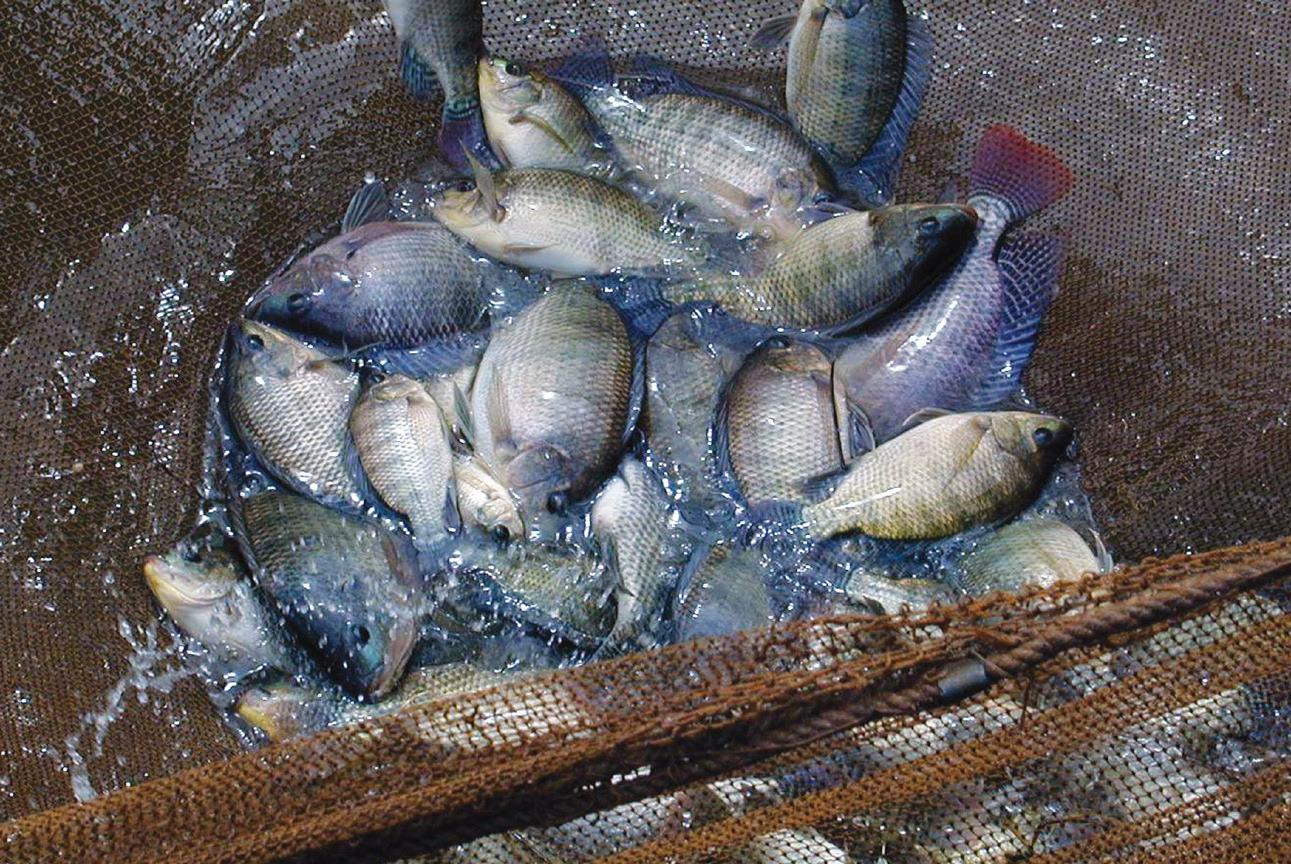
6 minute read
News Review
Highlights of recent news from Hatcheryfm.com
HATCHERY FEED & MANAGEMENT
News as it happens in the Newsroom at Hatcheryfm.com - sign up for our free newsletter for biweekly updates
Alltech Coppens to provide next-generation starter feeds
Alltech Coppens launched an improved range of innovative starter feeds for trout. Backed by extensive research at Alltech Coppens Aqua Centre (ACAC), TOP fry feed is shown to provide key nutrients while improving water quality. Understanding the importance of early nutrition, the company advanced its range of starter feeds to support trout farmers in raising high-quality products for consumers. Research at ACAC shows that Alltech Coppens TOP fry feed has an optimized ratio between digestible protein and digestible energy (DP:DE). The result is better performance, higher protein utilization and lower ammonia excretion, leading to improved feed efficiency and better water quality. Two of the largest sizes of TOP feed are now available as micro-pellets that combine a slow sink rate paired with high water stability. This allows trout fry more time to eat while the water is kept cleaner.

New rapid response range of genetic services
Since 2012, Xelect has been working with major producers globally to manage their breeding programs and provide critical support services. In response to the high demand from the industry, a new rapid response range of genetic services, Xelect Express, is now available. It offers quick, cost effective access to the company’s genetics expertise for genotyping, pedigree assignment, gene expression, ploidy and sex determination.
“Our breeding program customers have always had access to our genetic testing services, but recently we’ve seen how the demand increased. Whether it’s impartially checking the ploidy of eggs or conducting spot checks to avoid in-breeding in broodstock, people want to have certainty over the

quality of their supplies and the long-term health of their stocks,” CEO, Ian Johnston, said.
Automated egg sorter identifies fast-growing fish before feeding
GenetiRate, Inc. unveiled an automated system that sorts 125,000 eyed eggs per hour employing a patented test that identifies fast-growth fish. This sorting occurs at the same time as eggs are sorted to remove dead individuals, fitting easily into the egg handling schedule. Benjamin Renquist, GenetiRate’s co-founder,

said that “because we GenetiRate salmonids at the eyed egg stage, the GenetiRate test is the first to identify fast-growing fish prior to feeding. Accordingly, GenetiRate’s measure of growth is independent of food intake.”
Although the automation is currently only applicable to salmonids, the next focus is towards developing a sorter that can be applied in non-salmonid species.
New innovative genotyping tool for whiteleg shrimp
The Center for Aquaculture Technologies (CAT) launched the AQUAarray HD [vannamei], a universally applicable tool incorporating the latest advancements in genetic marker information for whiteleg shrimp. Developed in collaboration with Neogen and available now from The Center for Aquaculture Technologies, the AQUAarray HD [vannamei] is the first product to be released in the AQUAarray line and can be used for a variety of applications including parentage assignment, assessment of genetic diversity, traceability, genomic selection, and more.
Transformational fish vaccination robot to increase hatcheries productivity
With support from Agri-EPI, Aqualife has won £250,000 funding from the Seafood Innovation Fund, awarded by the Centre for Environment,

Fisheries and Aquaculture Science (CEFAS), to develop and launch a “transformational” fish vaccinating robot by the end of 2021. The robot, named Incubot 2, will be able to vaccinate fish at sizes below 20 grams, as opposed to the common weight of between 30 and 120 grams, allowing producers to increase productivity by growing their fish out of hatcheries far sooner. It will be capable of vaccinating most species of farmed fish, in large numbers. Incubot 2 will be a mobile platform allowing Aqualife to offer automated vaccination to smaller fish farms which cannot afford to invest in large scale immobile systems. The robot will also help to improve fish quality using artificial intelligence and “deep learning” algorithms to increase vaccination accuracy and improve fish grading.

Barramundi Asia, one of the world largest barramundi producers, acquired the Temasek startup, Allegro Aqua, that commercializes a “premium” barramundi broodstock with specific genetic traits. The start-up was established in 2018 to scale up the production of a higher quality strain of Asian sea bass after scientists from the Temasek Life Sciences Laboratory (TLL) succeeded in breeding superior fingerlings with the support of the former Agri-food and Veterinary Authority of Singapore and the National Research Foundation. The merger of the two companies is expected to not only help Barramundi Asia produce more fish but also reduce the mortality rate of its stocks using the technology developed by Allegro Aqua. Premium barramundi to be produced in Singapore
MSD Animal Health acquires Vaki from Pentair
The announcement further positions MSD Animal Health as a global leader in broadening its aquaculture portfolio by expanding into complementary fish farming and conservation areas to generate outcomes with precision farming and fish welfare solutions, which complement its existing portfolio of vaccines and

pharmaceuticals. Vaki will be a leading brand under the Biomark business within MSD Animal Health, focused on a range of equipment, products and technology for fish counting and size estimation from freshwater to saltwater rearing, while c ollecting data and analytics for each stage of fish production.
Genetic resistance to lethal virus found in tilapia
Otohime ® : Kodawari* for Aquaculture


• Highest quality ingredients, extraordinary nutrition • Larval feed for all life stages of virtually all marine finfish • Super clean, excellent pellet integrity

Exclusively distributed in the Americas by:
Reed Mariculture
LEARN MORE: bit.ly/ohk-3
Produced by:
*A sincere, unwavering focus and uncompromising, relentless devotion to something.
© 2020 Reed Mariculture, Inc. All rights reserved. All other trademarks are the property of their respective owners
Scientists found resistance to Tilapia Lake Virus (TiLV) which was mainly due to differences in genes between tilapia families. The finding could help to protect stocks of tilapia, which is an important food source in Africa, Asia and South America and worth nearly $10 billion to the global economy.
Researchers from University of Edinburgh’s Roslin Institute and WorldFish analyzed the genes of 1,821 Genetically Improved Farmed Tilapia (GIFT), which were tagged and placed in a pond that had an outbreak of TiLV. The fish used in this experiment were members of 124 families, and the team discovered that there was a large variation in family survival. Some family groups had no deaths, whereas others found to have a 100% mortality rate.
Statistical models showed that resistance to the virus was very heritable, and this means that selective breeding to produce more resistant tilapia strains is likely to be effective. The variation in TiLV resistance were found to be independent of genetic variation in growth, meaning that any future breeding programs for GIFT that produce fish resistant to TiLV will not adversely affect the growth of the fish, and will benefit farmers’ yields.
The GIFT strain was been selectively bred to be fast growing and adaptable to a wide range of environments. The strain is produced in at least 14 countries, helping to reduce poverty and hunger.










